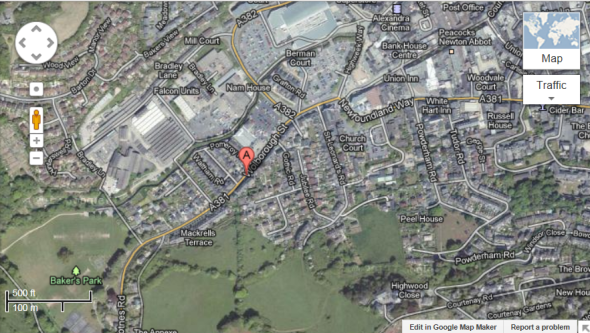The Building Of Newton Abbot’s Market
Posted: June 21, 2012 Filed under: Devon, Early, England, Gilbert Yarde, History, Markets, Markets, Mills, Mills, Newton Abbot, Newton Bushel, Newton Bushel, Walter Yarde, Wolborough Street, Wool | Tags: Bradley Manor, Coarse Woollen Cloth, Gilbert Yarde, Kersey, Markets, Newton Bushel, Serge, Sheep, Undercover Market, Walter Yarde, Wolborough Street, Wool Leave a commentGilbert Yarde inherited the markets and Bradley Manor from Walter Yarde and he built an undercover market in Wolborough Street. Wool continued to be the main commodity with Newton Bushel reputed for producers of Kersey (Coarse Woollen Cloth) or Serge.
Newton Abbot Market History
Posted: June 17, 2012 Filed under: Cattle, Devon, England, History, Markets, Markets, Streets, Wolborough Street | Tags: 27 Wolborough Street, Alice Gaverock, Battle of Triangle Hill, Bull Ring, Cattle, Elizabeth Gaverock, Fairs, Inheritance, John Gaverock, Lord's Manor The, Market House, Markets, Newton Abbot, Newton Bushell, Pigs, Richard Yarde, Sheep, St. Leonardm, Susan Gaverock, Triangle Hill, Wednesday Market, Wolborough Street, Yarde, Yarde Family Leave a commentJohn Gaverock (c1533) had three daughters Elizabeth, Alice and Susan. After the death of John Gaverock they sold part of their inheritance to the Yarde family. In 1633 Richard Yarde was responsible for amalgamating the two markets and fairs and from then on the larger combined Wednesday market was held in Wolborough Street, flourishing as one body. The Market House was at the west end of St. Leonard’s and was moved in 1826. Sheep, pigs and cattle stood right up through Wolborough Street and the bull ring was opposite 27 Wolborough Street. As a result the Market site on Triangle Hill in Newton Bushell fell into decline.
Wolborough Street
Posted: June 15, 2012 Filed under: Devon, Early, England, Forde, Forde Manor, John Gaverock, Newton Abbot, Streets, Wolborough, Wolborough Street | Tags: Forde House, John Gaverock, John Gaverock of Forde., Manor House, Newton Abbot, Wolborough Street Leave a commentJohn Gaverock lived in the manor house in Wolborough Street until he owned the town and then he built Forde House and became known as John Gaverock of Forde.
Newton Abbot Streets
Posted: May 13, 2012 Filed under: Bank Street, Bridge Street, Buildings, Courtenay Street, East Street, East Street, Marshes, Newton Abbot, Queen Street, St. Leonard's Tower, Victorian, Wolborough Street | Tags: Bank Street, Bridge Street, Courtenay Street, Devon, East Street, England, Market Square, Marshes, Newton Abbot, Queen Street, Railway, Railway Station, St. Leonard's Tower, Victorian, Victorian era, Wolborough Street Leave a commentNewton Abbot had three main streets, Bridge Street, Wolborough Street, and East Street. Courtenay Street and Queen Street grew later leading down to the marshes. Following the arrival of the railway in 1846, access to the station became a priority. Poverty and squalor was commonplace with lack of sanitation and open-range fires until the planners had their way and in Victorian times the market square was reputed to be a place of Victorian elegance. Today the town centre retains some remnants of its past glories such as St. Leonard’s Tower at the junctions of Wolborough Street, Bank Street and East Street.
I hope you enjoyed this, if so kindly click like, comments and follow, thank you.





You must be logged in to post a comment.